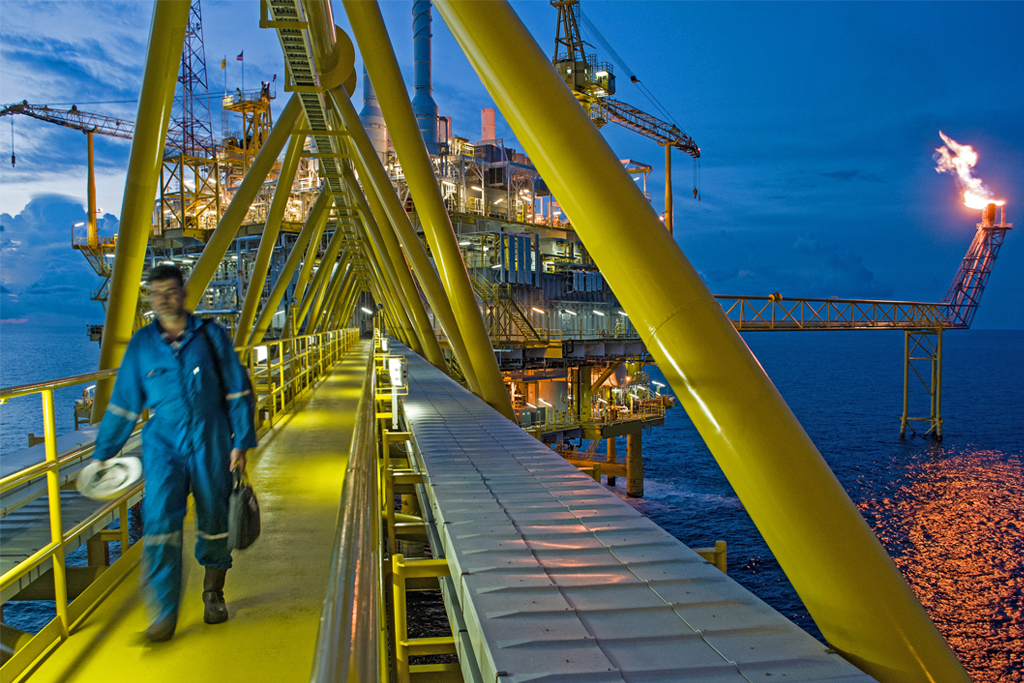Why does the price of global crude oil rise and fall? Viva Energy Australia’s Supply Process Lead, Jeremy Harris, looks at the key drivers and explains the mechanics behind the fluctuations.
The primary drivers of crude oil prices have always been supply and demand. If there’s too much oil or not enough demand the price goes down; if there’s not enough oil or too much demand, the price goes up. Supply, demand and price work in lock step.
At the base level, it’s a balance between crude oil production versus consumption. Crude oil is produced globally but there are a couple of main crude-producing regions – the Middle East (Saudi Arabia, Iran, Iraq, Kuwait, the key players in OPEC), West Africa, Russia, the North Sea and the United States.
The crude from these oil-producing regions is traded globally and priced according to a few key markers. For instance, if you’re in trading in Europe, you’ll probably buy your crude oil on the ‘Brent’ marker, which is a benchmark assessment of the price of light North Sea crude. If you’re trading in America, you will likely trade off the ‘WTI’ (West Texas Intermediate) marker.
In Australia, we’ve traditionally traded crude based on the ‘Tapis’ marker, which is traded in Singapore; however, Singapore traders are starting to buy and sell regional crude off the Brent marker, reflecting the increasingly global view of the oil market.
As a major global supplier of crude, OPEC has historically used the supply-demand balance to its benefit, producing only as much as it needs to in order to satisfy demand.
Towards the end of 2014, however, OPEC changed its strategy to maintain market share, driving supply of crude oil to greatly exceed demand, leading to the significant decrease in crude oil prices (US$105 a barrel in late 2014 to US$45 currently). Market wisdom feels this was to test the mettle of alternative high-cost producers, primarily located in the relatively new US shale oil industry.

The role of futures
Physical crude oil is not the only way to trade oil. While the physical sets the headline spot price, it is possible to trade future oil prices through financial instruments called ‘futures’. These are traded by two main groups. The first covers those who produce crude oil (Shell, BP) or consume oil (Rio Tinto, airlines) and want to lock in a future price, or ‘hedge’. The second are the speculators who for some reason think the price will go up or down in the future and trade accordingly.
The speculators tend to have a far greater influence than hedgers. For instance, if they look at the global supply-demand balance and speculate that supply will increase, they’ll take a position that the price of crude oil will go down further so they ‘short the market’. If everybody follows, including the physical traders, the price will indeed go down.
It’s a chicken and egg question as to the influence of futures trading on the physical market. There’s no clear answer, since it is situation-specific and often driven by intangibles such as market sentiment or political fallout.
Politics, economics and the weather
Other factors influencing global crude oil prices include intangibles such as political events, economic sentiment and even the weather.
Political events can and do impact global crude oil prices in the long and short term, and in the past have led to well publicised ‘oil shocks’.
Likewise, economic decisions can also impact crude oil prices in the long and short term, but more from the ‘demand’ side. With the slowing of the Chinese economy and resultant reduction of industrial production, China is importing less diesel and thereby withdrawing demand from the market. As a consequence, overall supply has exceeded demand and the price of crude oil has dropped accordingly.
Other intangibles such as weather tend to have a shorter, more regional impact on oil prices, and tend to impact specific products. For instance, if the Japanese winter is very cold, people burn a lot more heating oil to keep warm, leading to a short-term spike in the regional price of that product.
As you can see, it’s always linked back to the impact the event will have on the supply-demand balance.
The table below, created by the AIP, shows a range of factors that impact either supply or demand.
Key factors influencing international crude oil prices
| Changes in regional and global supply balances in both the short and longer term |
Changes in economic conditions/sentiment in both the short and longer term |
| Major supply disruptions from natural disasters, war, civil unrest and strikes |
New oil discoveries |
| Seasonal demand and demand spikes |
Investment in new oil production/refining capacity |
| Inventory management |
Future global demand and supply balances |
| Shipping availability and freight rates |
Global economic growth and conditions |
| Market trading activities and strategies |
Costs of oil production and refining |
| Short term decisions of oil producing countries, National Oil Companies (NOCs) and nations holding strategic reserves |
Technological progress |
| Alternative fuel developments |
Long term policies of NOCs and oil producing nations |
| Regulation and government policy |
Population growth |
Source: Australian Institute of Petroleum
How does this affect the Australian market?
Ultimately, crude oil prices fluctuate in response to changes in supply and demand, with lots of interconnected factors at play. It’s not easy to forecast which way prices will move; nevertheless, being aware of the drivers and keeping abreast of market indicators should allow Australian companies to maximise on the lows and ride out any highs.
For more information about factors that influence the price of fuel, please visit www.aip.com.au or www.iea.org
Interested in Viva Energy products?
Find out more here